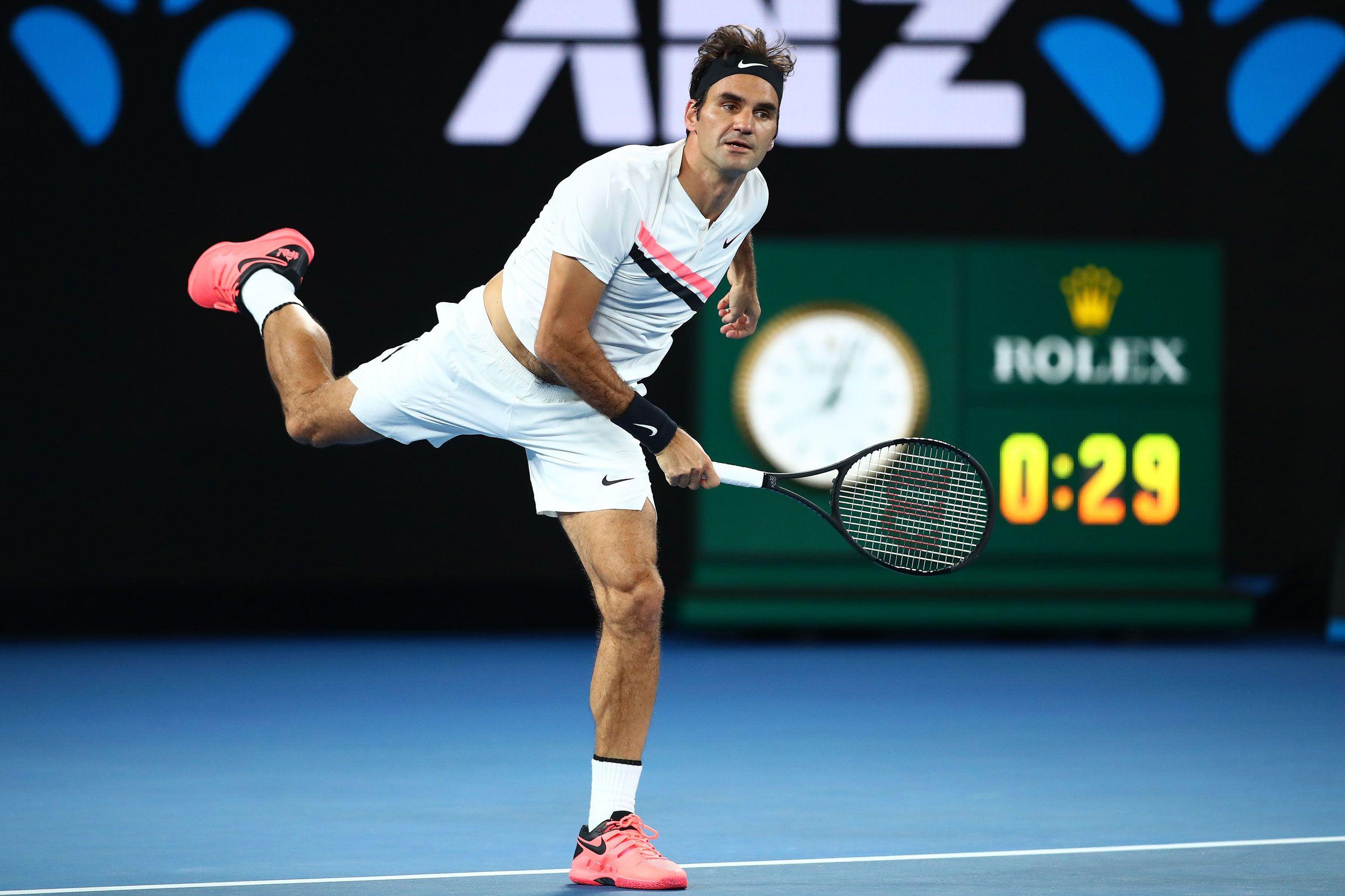Roger Federer’s eyes twitched early in the Australian Open championship match. His opponent, Marin Cilic, was readying a second serve, following his toss through the air as he attempted to hold his first service game. For a brief moment, Federer was perched just feet behind the service line; by the time that Cilic began to kick his serve toward the box, Federer had already taken a step to his left and started to swing.
For all that is made of quick feet and heavy strokes, tennis is, first and foremost, a game of vision. The ability to gain a split second on a bolt for a drop shot, or take a fraction of a step to get behind a serve, is the invisible force that decides matches. While Federer’s return of serve has never been thought of as a signature asset, his on-court Spidey sense has allowed him to routinely get the best of a tour full of taller and more powerful players. Federer’s Sharingan essentially spoiled Andy Roddick’s career. More recently, it’s done the same to Cilic, who entered this weekend having already lost to Federer in each of the past two Wimbledons.

Federer’s 6-2, 6-7 (5-7), 6-3, 3-6, 6-1 triumph over Cilic on Sunday wasn’t the steamrolling that many people might have expected from the Swiss given that he’d advanced to this point in the tournament without dropping a set in six rounds. After the first set, though, which was over so fast that commentators began to make jokes at Cilic’s expense, the Croatian loosened up, playing more confidently on his serve and showing a willingness to test Federer in rallies from the baseline on return games.
But after squandering a handful of break chances in the first game of the decisive fifth set, Cilic lost his nerve. He dropped his serve, and then failed to break back in a gritty third game. Cilic’s sets were won, to his credit, by overcoming a great deal of pushback. Federer’s wins came quickly, and by the final set the mental toll of playing four-and-a-half sets uphill seemed to have stymied Cilic’s will.
Approaching 37, Federer had outlasted all comers, hoisting the trophy in Melbourne just like he did last January, and four times before that. Further, he’d set a benchmark that once would have felt unthinkable: He won his 20th major.
Twenty. That number, round and perfect and lazy, immediately becomes the figure most closely associated with Federer’s career, even more than 18 and 19 were last year. It’s a marker of his unassailability, of his remarkable staying power. Only four other men in the Open Era have won more than 10. And Federer, who now extends his majors total lead over Rafael Nadal back to four, seems to have no interest in retiring soon.
Yet in tennis, as in life, numbers can be incapable of telling a full story. Part of the difficulty with contextualizing what Federer is doing can be traced to a limited pool of narrative framing devices. A late-career win following a drought, like Pete Sampras’s victory at the 2002 U.S. Open, is seen as a fluke, or as a miracle. A return to dominance after a period away from the top, like the one sparked by Serena Williams’s triumph at the 2007 Australian Open, is a comeback. Federer’s 2017, at different points during the year, was characterized as one or the other. It was an aberration, a dream. By winning two majors within a seven-month span after not winning one since 2012, he had ostensibly managed to reshape himself into top form long after passing his apex.
Except maybe that’s the flaw with counting majors. The way that most of the world now looks at Federer’s lean years is rather unfair. Between 2010 and 2016, he won two majors, made four more major finals, and made 10 more semifinals. Over the course of 26 majors, he lost before the second week only twice. Federer’s drought wasn’t a precursor to his demise. In all but three of those semifinal-or-better appearances, he ran into either Nadal or Djokovic, who could reasonably be considered the next two greatest men ever to play the game.
The lost generation, which includes players now approaching their 30s, is largely understood by its inability to seize control of the game from the Big Four. But this era in men’s tennis has been defined by exceptionalism. For 15 years, Federer has been virtually impossible to eliminate in the early rounds of majors, instead floating far above the field at a magnitude never before seen. His performance these past two weeks is a microcosm of that: As every other contender in the field succumbed to upset or injury, he kept going, preparing to return opposing serves before they were even delivered.
Federer’s commercial side has long been a somehow-agreeable stand-in for impossible aspirational ideals. He makes the gaudy look handsome and refined. He makes the showy and impractical look simple and efficient. He makes getting old look fun and easy (most of the time). His vision remains impeccable.
But commercial ideals are intentionally vague. Sports often demand cleaner views of objectives, and those tend to come in the form of records. Six rings. Twenty-three gold medals. Break the records and be rewarded.
Twenty majors is at once a record and an undersell. Roger Federer is the greatest champion men’s tennis has ever known, as the 2018 Australian Open once again made clear. He has also been more exceptional than any number, no matter how astronomical, will ever accurately depict.